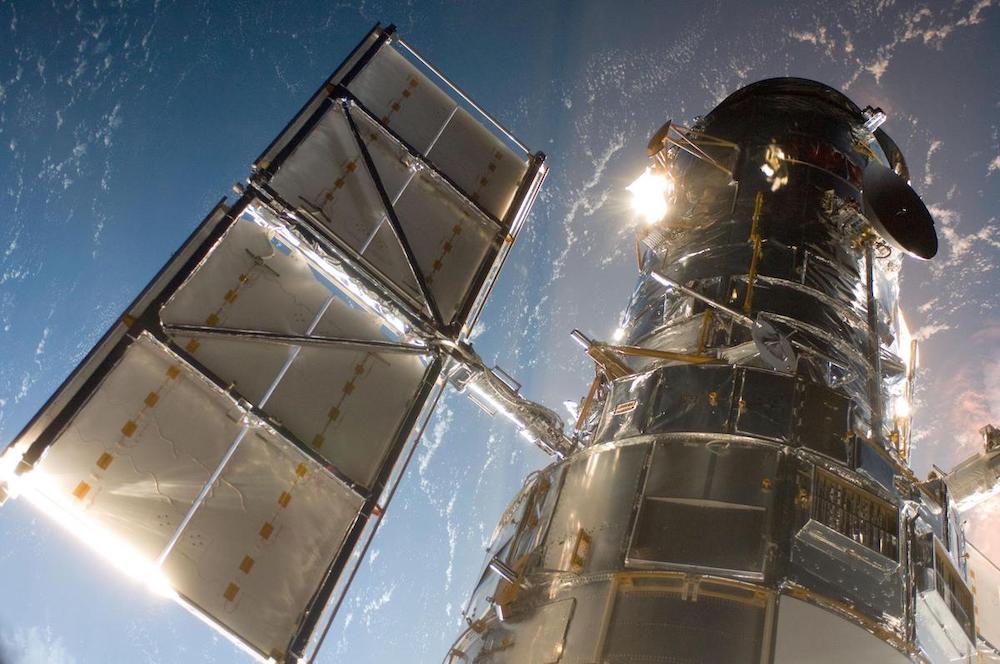
NASA said Saturday that the Hubble Space Telescope, now running on a backup payload computer, has resumed scientific observations after a failure knocked the aging observatory offline for more than a month.
“All instruments on the Hubble Space Telescope are now in operational status, and science data is once again being collected to further our understanding of the universe,” NASA tweeted Saturday.
A failure traced to a power control unit associated with Hubble’s primary payload computer put the telescope’s science instruments in safe mode and suspended observations June 13.
“Hubble is an icon, giving us incredible insight into the cosmos over the past three decades,” said NASA Administrator Bill Nelson. “I’m proud of the Hubble team, from current members to Hubble alumni who stepped in to lend their support and expertise. Thanks to their dedication and thoughtful work, Hubble will continue to build on its 31-year legacy, broadening our horizons with its view of the universe.”
NASA said the first science observation with the newly-restored Hubble Space Telescope was scheduled for Saturday afternoon. Most of the observations missed during the 34-day outage will be rescheduled for a later date, NASA saiid.
Agency officials said Friday that ground teams successfully powered up Hubble’s backup payload computer, setting the stage for the resumption of astronomical observations the next day.
“The good news is we were able to get the payload computer back up and running using some backup components,” said Nzinga Tull, the Hubble anomaly response manager at NASA’s Goddard Space Flight Center, on Friday. “We were able to recover affiliated components, and we’re really excited about being to get back on Hubble science.”
The aging observatory has been in orbit 31 years, returning spectacular cosmic images and data that have helped scientists rewrite astronomy textbooks. Astronauts on five space shuttle missions repaired and upgraded the observatory, keeping it going well beyond its original design life.
“NASA anticipates that Hubble will last for many more years and will continue making groundbreaking observations, working in tandem with other space observatories including the James Webb Space Telescope to further our knowledge of the cosmos,” the space agency said in a statement.
Hubble’s gyroscopes, which measure the direction and rate of the spacecraft’s movement, are degrading after astronauts replaced all six of the observatory’s gyros on the final shuttle servicing mission in 2009. Three of the gyros are still operating, and Hubble needs all three for regular operations.
Engineers have devised ways to continue some of Hubble’s work with just one gyro, but that would come with limitations in where the telescope could point for astronomical observations. Hubble’s previous safe mode in March was caused by a bug in software ground controllers uplinked to help extend the life of the degrading gyros.
The most recent Hubble outage involved hardware linked to the telescope’s science instruments.
After spending weeks evaluating what knocked Hubble’s primary payload computer offline June 13, engineers developed procedures to switch to backup systems and resume the telescope’s observations of the universe.
Engineers put those procedures into action Thursday by switching to the backup side of Hubble’s Science Instrument and Command and Data Handling unit, bringing online a backup power control unit and command and science data formatter.
NASA teams investigating Hubble’s recent woes determined a problem in the power control unit on the primary science of the science command and data handling computer likely caused the interruption of science observations last month.
The power control unit regulates the voltage feeding Hubble’s payload computer, which controls and coordinates observatory’s scientific instruments. One of the initial troubleshooting steps tried by Hubble’s ground team was to switch to a backup payload computer, but the redundant computer also experienced the same error.
That led engineers to trace the cause to a different component on the Science Instrument Command and Data Handling Unit.
The power control unit is designed to ensure the payload computer and its memory modules receive a constant five volts of electricity. A secondary protection circuit is designed to tell the payload computer to shut down if it senses voltage is too low or too high, according to NASA.
Engineers determined the power regulator was either supplying the wrong voltage to the payload computer, or the secondary protection circuit had failed and was stuck in its “inhibit state,” NASA said in an update posted online.
NASA said there is no way to remotely reset the power control unit, so managers decided to switch to the backup side of the Science Instrument Command and Data Handling Unit, which contains the backup power control unit.
Controllers completed the switchover Thursday, and NASA said Friday that teams turned on Hubble’s backup payload computer and loaded it with flight software. Then they configured the backup computer to its normal operations mode.
The last time NASA executed a similar changeover on Hubble was in 2008, following the failure of a science data formatter. The last space shuttle servicing mission to Hubble replaced the entire Science Instrument Command and Data Handling Unit, installing the unit currently in use.
“I was quite worried,” said Thomas Zurbuchen, head of NASA’s science mission directorate, in a video he tweeted Friday. “We all knew this was riskier than we normally do.”
Zurbuchen said Friday that Hubble is showing its age, but he’s optimistic the observatory is not done.
“It’s telling us, ‘Look, I’m getting a little bit old here,'” he said. “Even despite that, more science is ahead, and we’re excited about it.”
Email the author.
Follow Stephen Clark on Twitter: @StephenClark1.
